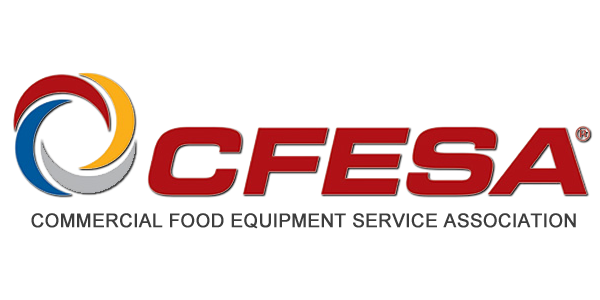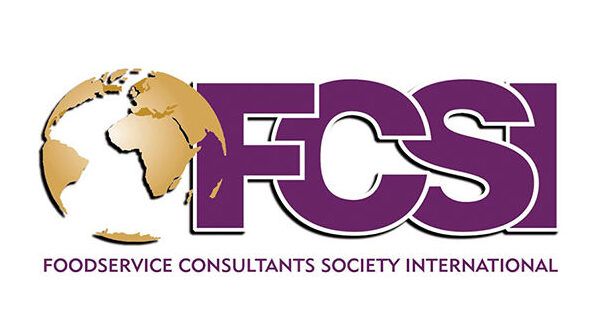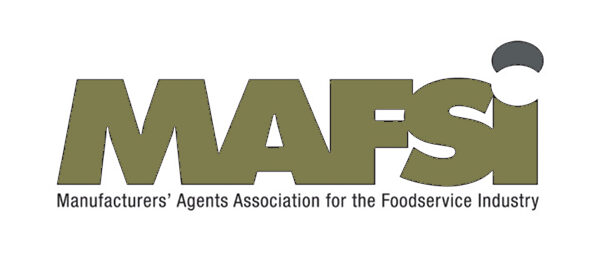INDUSTRY STANDARDS
The process of providing a foodservice operator with the proper products and services is the ultimate goal of all segments of the foodservice industry. There is a need for a fully coordinated effort on the part of all parties involved in the design, sale, installation and operation of equipment (whether new or renovated) to assure the proper result for the operator. Through the joint efforts of CFESA (Commercial Food Equipment Service Association), FCSI (Foodservice Consultants Society International) and MAFSI (Manufacturers’ Agents for the Foodservice Industry), the following Glossary of Terms was compiled to clarify the services entitled to the end user under the manufacturers installation manuals.
FOODSERVICE INDUSTRY GLOSSARY OF TERMS
Clear Communication:
An Estimated Time of Arrival (ETA), status of repair, next step to follow, define if warranty or not, warranty, labor rate, overtime, estimate if requested along with recommendation by/to any appropriate party.
Dealer:
A company that is a dealer of food service equipment and/or supplies that takes title to the merchandise; performs value added functions such as warehousing, showroom display, advertising, professional and knowledgeable salespersons, delivery, design, extends credit and equipment set-up and demonstration. The majority of the dealer’s sales volume is dedicated primarily to food service equipment and supplies and they develop business to the end user. The customers of the dealer include independent and chain restaurants plus institutions that offer food service (for example: schools, prisons, hospitals, and military). Dealers purchase primarily from manufacturers and their agents representing them.
Demonstration:
The specific act of a trained professional showing the operator and/or owner how to use a particular piece of culinary equipment. This demonstration should include operations, application as well as cleaning and maintenance. All actions within the demonstration should be referenced in the operator manual as prepared by the manufacturer of said piece of equipment.
Professional Foodservice Consultant:
The client’s representative responsible for planning the operational and design services of the foodservice facilities for the project. Professional foodservice consultants provide an independent consulting service. They do not purchase or sell foodservice equipment.
Management Advisory Consultant:
Management advisory services (MAS) cover a wide spectrum of foodservice operational and financial related topics. For most MAS or management and operations consultants, there is a complementary relationship with food facility consultants, equipment manufacturers, representatives and dealers. This is due to the inter-relationship of operational effectiveness and efficiency as dictated by the design, layout and equipment selection. Often, a MAS consultant is retained by the client or architect to assist in developing the operational program (market research, concept, menu, service levels, sizing, staffing requirements, financial pro forma, etc.) for a new or remodeled food facility.
Food Facilities Design Consultant:
Design consultants select the equipment, create the equipment plans and specifications for each project based on information gathered and coordinated with the client, MAS consultant and/or Architect. The design consultant is the client’s foodservice representative throughout each project. They maintain the relationships with the project design team, equipment manufacturers their representatives, dealers and on-site project personnel during the construction and installation phase. This helps insure each project meets the design specifications approved by the client.
Down Time:
The time lapse between the moment a piece of equipment is reported as non-operational to the Service Company with a request for service to remedy the situation and the time the piece of equipment is back in service as per the Original Equipment Manufacturers (OEM) specifications.
Equipment:
A piece of machinery, usually containing a motor, heating element or compressor, with the specific task of preparing, cooking, refrigerating or cleaning in the foodservice industry.
First Call Fix:
The reported complaint is completely repaired on the first trip, using OEM parts if required. No return trip is necessary.
Furniture:
A mixed category of booths, chairs, tables, podiums, bar stools, and mobile carts. Quality is of utmost importance when purchasing furniture due to its heavy use. As with the tabletop choices, the furniture selection is important to create the right design for the dining room.
Installation:
A good installation is one where the manufacturer’s requirements, as spelled out in the equipment manual, have all been met along with all governing codes.
Installation Levels:
Level I –
This is the installation or replacement of the same or similar, existing pieces of foodservice equipment in an existing foodservice establishment.
Level II –
This is the installation of new equipment for entire kitchens during the remodel or construction phase to include receiving, warehousing, consolidating equipment, and delivery for each phase of installation and assembly. It also includes setting in place, leveling, caulking and trimming as needed, with final corrections made, started up and tested.
Level III –
This includes everything in Level II and may or may not include some other options (such as hoods, Heating, Ventilation, and Air Conditioning (HVAC), fire suppression, complete electrical or plumbing contracting, carpentry, communications, computers, flooring, roofing, stainless steel welding or complete general contracting as well as pulling all necessary permits).
Installation Inspection:
This is the act of a qualified individual reviewing the “job site” to certify and confirm that all of the mechanical connections to a particular piece of equipment are correct and in accordance with the manufacturer’s written specifications. The term MECHANICAL in this definition refers to gas, steam, water, electric and ventilation. The installation inspection also includes proper clearances, service access, positioning and leveling of equipment, and the use of restraining devices when applicable. This inspection does not include confirmation of the installation meeting applicable codes.
Manufacturer:
A company that manufactures foodservice equipment and/or supplies is engaged in the research and development, design, engineering and physical processing of raw materials, or assembly of materials into a finished product.
Manufacturers’ Representative:
A manufacturers’ representative, often referred to as the “factory rep,” is the professional sales person representing the brand named manufacturer in the market place. These “reps” are typically part of an independently owned and operated sales organization that is headquartered within their appointed sales and marketing region. Manufacturers’ “reps” are the professional, experienced, trained and educated eyes and ears, of the manufacturer in the market place. A manufacturers’ “rep” has the responsibility to educate the operator, dealer and consultant, on his/her product lines, in a given territory. Manufacturers” Agents are also the skilled individuals who provide the equipment demonstration and training to the operator community.
OEM Parts:
Parts sold directly or indirectly by the Original Equipment Manufacturer.
Order Line Fill Rate Ratio:
The number of parts lines in a given parts or service order that were satisfied at the time the order was placed divided by the total number of parts lines included in the order. The ratio should be expressed in percentage.
Order Quantity Fill Rate Ratio:
The sum of the quantities of the parts available to fill a given parts or service order at the time the order was placed, divided by the sum of all parts quantities on that order. The ratio should be expressed in percentage.
Order Value Fill Rate Ratio:
The sum of the net dollar value of the parts available to fill a given parts or service order at the time the order was placed, divided by the sum of the net value of all the parts on that order. The ratio should be expressed in a percentage.
Performance Check:
Verification, by an authorized technician, that the manufacturer’s installation specifications are met and utilities are correct for newly installed equipment. To ensure proper operation of the piece of equipment, an authorized technician, may need to perform minor adjustments, alignments and calibrations. Performance checks are done any time after equipment has been in operation for a minimum of two weeks to a maximum of 90 days.
Phone Fix:
Any time a customer is given technical support over the phone that returns the equipment to proper operation and/or does not require a site visit.
Response Time:
The number of regular working hours the service company takes between the times the call was placed at the service agency and the time when the technician arrived at the location for service. For statistical purposes, it should exclude emergency or scheduled service calls.
Standard response time expectations are:
Within eight hours the service technician will arrive at the job site if located within fifty miles of the service center. This standard time will be extended in highly populated metropolitan areas where travel times are significantly longer.
Same Day Fix:
The reported complaint is completely repaired on the same business day, using OEM parts, if required.
Standard emergency response time:
The time between the customer calling for service and the time the service technician arrives at the job site regardless of the time of day the call comes in.
Standard emergency response time expectations are:
- Within two hours the service agency will call the customer back.
- Within four hours the service technician will arrive at the job site if located within fifty miles of the service center. This standard time will be extended in highly populated metropolitan areas where travel times are significantly longer.
Scheduled Service Call:
Definite appointment mutually agreed upon by the operator and service agent. This is not to be included in the measurement of emergency response time or standard response time.
Service Company:
An organization of one or more individuals whose main activity consist of a mix of installation, start up, repair and maintenance of foodservice equipment. The company will dispatch at the customer site trained technicians with properly equipped service vehicles. The same repair can also be performed by its technicians in a properly equipped Service Company repair shop. Generally, a competent technician and properly equipped vehicle or a properly equipped shop will include knowledge, product service literature, hand tools, power tools, trade specific tools and an assortment of spare parts to achieve a first time fix ratio of 60 percent or more. When such Service Company has a Warranty Service Agreement with one or more Foodservice Equipment Manufacturers, then the Service Company will carry the title of Service Agent or Authorized Service Agent (ASA) for the contracting Manufacturer. One of the basic requirements of this type of agreement usually includes factory training of the Service Agent Technicians and the use of the OEM parts for the repair of the Foodservice Equipment Manufacturer. When a Service Agent is required to stock a minimum mandatory stock for distribution purpose and sub-contract work within a defined territory, the Service Company will carry the status of Service and Parts Distributor in parallel to its basic Service Agent status. The exclusive or non exclusive status of the different type of agreement is on a per case basis and should be defined in a contractual agreement between the Service Company and the Manufacturer. The customers of the Service Company include Restaurants of all categories, Cafeteria, Institutions with Foodservice activities, Food Retailers, Equipment Dealers, Manufacturers, Manufacturers Representative and Consultants.
Small wares:
A large category of items found and used in virtually every area of a foodservice operation. Small wares items range from pots and pans to cutlery, measuring devices, cutting boards, serving vessels, storage containers, textiles and dozens of other useful and familiar items.
Start Up:
The term used to describe the physical act of a qualified technician physically performing the task of turning on a piece of equipment for the first time. Start up includes complete calibration and assurance that the piece of equipment is operating completely in accordance with manufacturer’s specifications. Start up MUST include a written report of all completed work or operation problems with the specific piece of equipment. Start-up cannot occur until an installation inspection has been performed and approved and any warranty service has been completed.
Tabletop:
The category that emphasizes the “front of the house.” It is where the food meets the customer. This is without exception one of the most critical components of any commercial foodservice operation. The tabletop category includes china, flatware, table lighting, glassware, and linens. All above-mentioned categories are essential in creating the perfect dining room design.
Warranty Service Call:
A warranty service call is when the authorized warranty Service Company for a piece of equipment responds to an operator, dealer or rep documented concern that a piece of equipment is not operating to the manufacturers standards. This concern may be functional, mechanical or, in terms of safety. If the stated concern is valid and actual within the terms of the warranty period, then the manufacturer will compensate the authorized service company according to their authorized service company agreement. If the operational concern has to do with incorrect installation or improper usage, then the service company must be compensated by some other responsible party involved in the cause of the specific problem. The notification of a “PROBLEM” itself doesn’t qualify the complaint as warranty unless it falls under the stated terms of the manufacturer’s warranty.
This glossary of terms is an attempt to create an understanding, among those within the foodservice industry, of the meaning of certain terms, standard practices or expectations within the industry. However, these terms are not required to be used or followed by any party.




